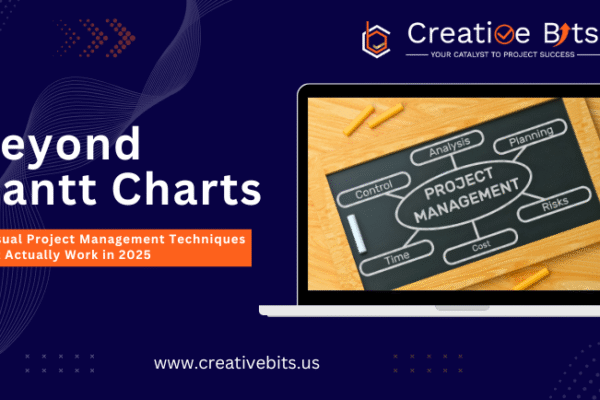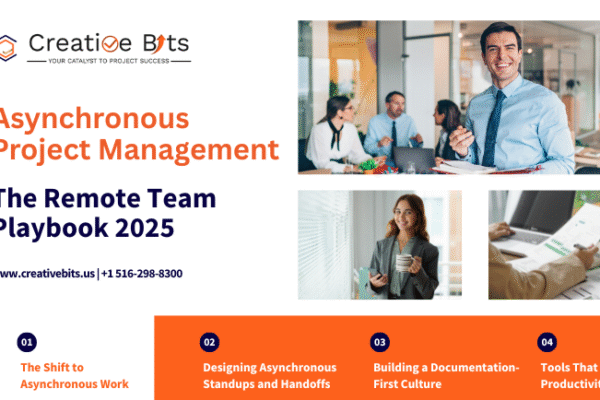In project management, success relies not only on effective planning and execution but also on managing project risk to handle unexpected challenges. Managing project risk is essential for navigating uncertainties that may impact project objectives, budgets, and timelines. By implementing structured risk management strategies, teams can identify, assess, and mitigate potential risks effectively, ensuring projects stay on track with minimal disruptions.
In this guide, we’ll dive into comprehensive strategies that can elevate your risk management process, fostering proactive control and resilience against unforeseen events.
What Is Project Risk Management?
Project risk management is a systematic process of identifying, analyzing, and responding to potential risks that could negatively impact a project. These risks can stem from various sources—financial, technical, environmental, or organizational—and can significantly affect project objectives, timelines, or budgets if not managed properly. Effective risk management can transform potential challenges into manageable tasks, promoting more reliable project outcomes.
Why Is Project Risk Management Essential?
When unmanaged, risks can lead to project delays, budget overruns, and unmet goals, making risk management crucial. By anticipating potential issues, project teams can devise strategies to mitigate impacts, optimize resources, and ultimately drive successful project completion. The benefits extend beyond immediate project success to foster an organizational culture that embraces agility and resilience.
1. Identify Risks Early in the Project Lifecycle
Effective risk management starts with the early identification of potential risks. This process helps pinpoint challenges that may impact project goals, allowing teams to address them proactively rather than reactively.
Techniques for Early Risk Identification
- Brainstorming Sessions: Gather input from team members to identify any foreseeable challenges.
- Expert Consultations: Seek advice from specialists who have insight into industry-specific risks.
- Historical Analysis: Review past projects for patterns in risk occurrences, which can provide insights into what to expect.
Early risk identification forms the foundation for all subsequent management actions, setting the tone for proactive risk responses throughout the project lifecycle.
2. Perform a Comprehensive Risk Assessment
Once risks are identified, the next step is assessing each one’s probability and impact. A comprehensive assessment will clarify which risks require immediate attention and which are less critical.
Key Elements in Risk Assessment
- Likelihood: Determine the probability that each risk will occur.
- Impact: Analyze the potential consequences of each risk on the project’s goals.
- Prioritization: Rank risks based on their likelihood and impact, focusing on those with the highest risk factor.
A risk matrix can be a helpful visual tool, categorizing risks by severity and assisting in prioritizing mitigation efforts accordingly.
3. Develop a Detailed Risk Mitigation Plan
Creating a mitigation plan involves identifying strategies to reduce the impact or likelihood of prioritized risks. A strong mitigation plan outlines specific steps to address each risk scenario effectively.
Key Approaches in Risk Mitigation
- Avoidance: Alter the project plan to eliminate specific risks.
- Reduction: Implement strategies to minimize the risk’s likelihood or impact.
- Transfer: Delegate the risk to another party, such as through insurance or outsourcing.
- Acceptance: Acknowledge low-impact risks and prepare to manage their consequences.
A well-crafted mitigation plan turns identified risks into actionable steps, ensuring that teams are prepared to handle challenges as they arise.
4. Establish Clear Risk Ownership
Assigning ownership is essential to ensure that risk management responsibilities are well-distributed and clearly defined. Designating specific team members as risk owners fosters accountability and encourages proactive management.
Roles and Responsibilities in Risk Ownership
- Project Managers: Oversee the risk management process and maintain a holistic view of project risks.
- Risk Owners: Take direct responsibility for managing and reporting on assigned risks.
- Stakeholders: Stay informed about major risks that could affect project outcomes and provide input when necessary.
Risk ownership creates a structured approach to handling project uncertainties, reducing confusion and enhancing the team’s collective responsibility.
5. Conduct Regular Risk Monitoring and Review
Even with a comprehensive plan, new risks can emerge as a project progresses. Regularly monitoring identified risks and conducting reviews ensure the risk management strategy remains current and effective.
Best Practices for Ongoing Risk Monitoring
- Routine Check-Ins: Regularly review risk statuses in team meetings.
- Continuous Reporting: Update risk documents with any changes or new findings.
- Key Performance Indicators (KPIs): Use metrics to track the effectiveness of risk management efforts.
Frequent monitoring allows teams to identify emerging risks and adjust their strategies as needed, maintaining control over the project environment.

6. Utilize Risk Management Software and Tools
Effective project risk management requires specialized tools to streamline the process, allowing project managers to identify, track, and address potential risks efficiently. These tools provide a centralized platform for organizing risk data, facilitating collaboration, and making data-driven decisions. Let’s explore some of the leading tools used for managing project risks effectively.
Popular Risk Management Tools
monday.com
monday.com offers a comprehensive project risk management solution through its monday projects, which seamlessly integrates with other project management workflows. With monday’s Risk Register Board, teams can identify, assess, and monitor project risks in real time, ensuring that potential issues are accounted for from the very beginning.
Key features include:
- Risk Calculation and Tracking: monday.com helps teams assess risks before they emerge, and it allows them to monitor risks as they evolve throughout the project lifecycle. By tracking probability, impact, and other risk data points, teams gain actionable insights that keep projects on track.
- Transparency with Connected Boards: monday.com’s Risk Register is connected to the Portfolio Management board, enabling teams to view essential risk details across the entire project portfolio. Each risk is segmented by columns such as risk status, probability, impact, and risk level, all of which make it easy to evaluate risk severity at a glance.
- Insightful Risk Scores: The platform’s calculated risk scores help prioritize risks based on their urgency. Conditional coloring emphasizes risk levels visually, from low (green) to high (red), making it easy for teams to focus on the most critical risks.
- Visual Dashboards: With its Risks Dashboard, monday.com centralizes project data, using widgets to display essential risk metrics in one place. This dashboard allows for real-time analysis and helps teams keep an eye on risk trends, ensuring timely action on emerging issues.
monday.com’s risk management features provide a transparent, data-driven approach that empowers teams to stay ahead of potential issues, promoting a proactive and organized risk management process.
- Microsoft Project: Offers extensive features for tracking project risks and timelines.
- RiskyProject: Specializes in risk assessment and mitigation planning.
- JIRA: A popular tool for agile teams, useful for identifying and managing project risks.
These tools improve collaboration, provide real-time data, and enhance visibility into risk management efforts across project teams. The right risk management tool will depend on your project’s specific needs, team size, and industry requirements.
7. Foster a Risk-Aware Culture in the Organization
Creating a culture of risk awareness empowers all team members to take an active role in managing risks. When everyone in the organization is attuned to potential challenges, it promotes a proactive and agile approach to project management.
Ways to Build a Risk-Aware Culture
- Training Programs: Equip teams with the skills to recognize and manage risks.
- Open Communication: Encourage open discussions about potential risks and challenges.
- Leadership Support: Leaders should set an example by prioritizing risk management in decision-making.
A risk-aware culture helps organizations adapt to uncertainties and fosters a mindset focused on continuous improvement.
8. Document Lessons Learned for Future Projects
Learning from past experiences is vital for improving future risk management efforts. Documentation ensures that valuable insights from one project can be applied to others.
Effective Documentation Practices
- Post-Project Reviews: Conduct meetings to analyze what went well and what could be improved.
- Risk Registers: Maintain a centralized log of all risks and their outcomes.
- Process Adjustments: Use documented lessons to refine risk management processes.
Documentation enhances knowledge sharing, supporting long-term growth and the continual improvement of risk management strategies.
Conclusion
Managing project risks is a critical component of successful project management. By systematically identifying, assessing, and mitigating risks, organizations can navigate challenges more effectively, ensuring that projects reach completion on time and within budget. These strategies not only strengthen individual project outcomes but also cultivate an agile, resilient organizational culture capable of handling complex, dynamic environments.
Implementing these risk management practices will make a significant difference in project success rates, paving the way for greater productivity and sustained growth in an increasingly uncertain world.

 monday.com Services
monday.com Services
